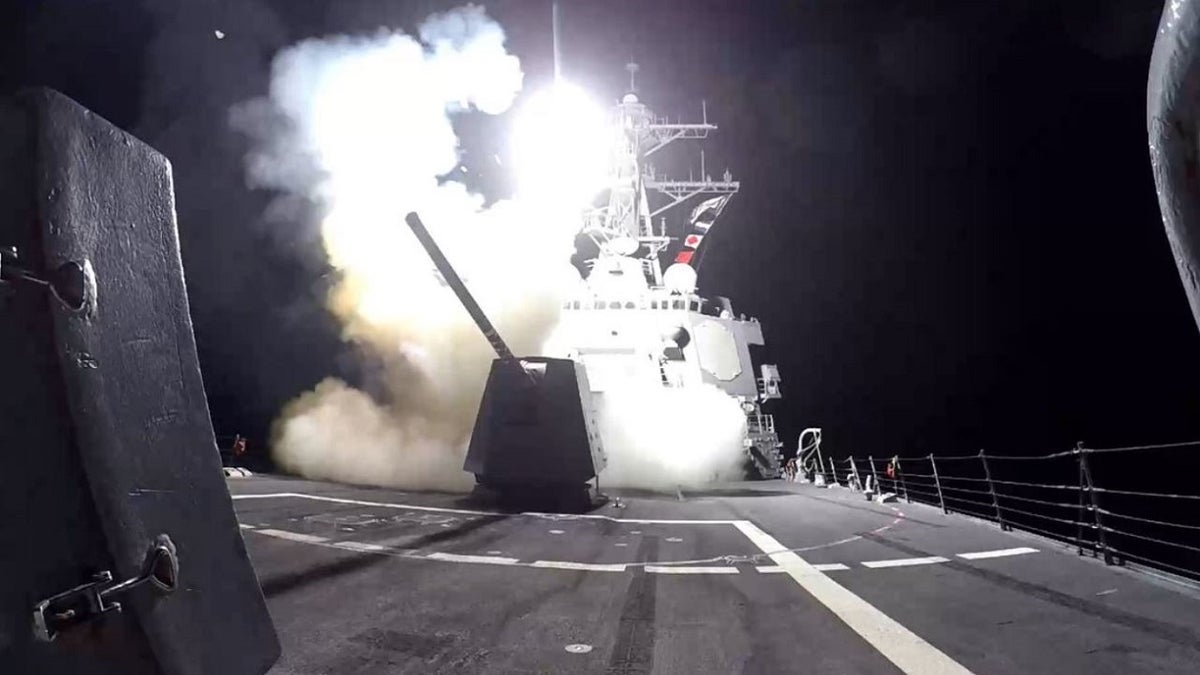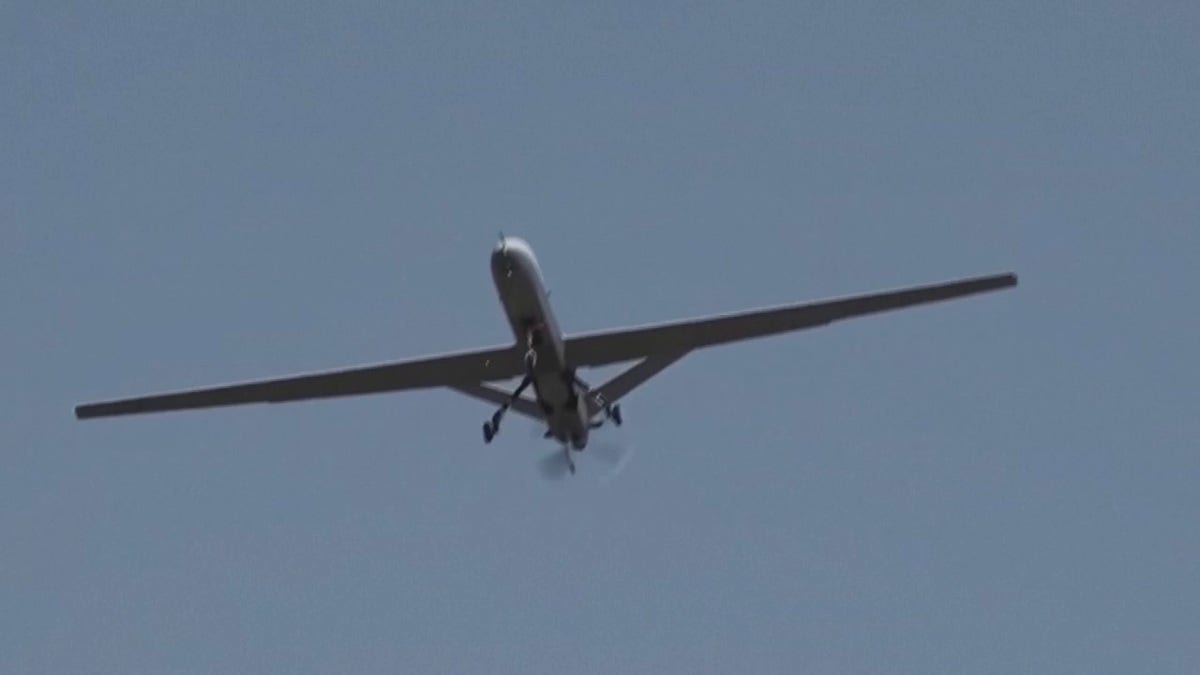Tech
US military not ready for low-tech war: ‘Crisis’

The U.S. military is the most powerful and technologically advanced fighting force in the world, but changes in battlefield tactics may cause leaders to adjust to inexpensive technology that has proven lethal around the world.
“The war in Ukraine is a perfect example of how multimillion-dollar military technology is going to be rendered obsolete by $500 drones,” Brett Velicovich, a drone expert, former Army intelligence and special operations soldier, told Fox News Digital.
The Ivanovets lists after several drones struck lethal blows. (East2West)
Velicovich’s comments come as Ukraine has continued to use inexpensive and widely available drones against Russian tanks, ships and bases with great success since the start of the war, a vital tactic to combat what most view as a lopsided fight between Ukrainian forces and their technologically superior Russian foes.
“One of Russia’s top navy ships in the Black Sea was destroyed by what was essentially a jet ski-esque drone that probably cost no more than a couple thousand dollars to build, yet two or three of those slammed into a Russian massive naval vessel and sunk it,” Velicovich said.
PUTIN’S NUKE THREAT ENDANGERS SOME OF AMERICA’S COOLEST TECHNOLOGY

The Arleigh Burke-class guided-missile destroyer USS Fitzgerald (U.S. Navy/Mass Communication Specialist Seaman David Flewellyn/Handout)
But it’s not just the Russian military confronting this changing battlefield reality, with inexpensive tech also being used against U.S. forces engaged in operations throughout the world.
In January, the USS Gravely destroyer was forced to use its close-in weapon system to fight off an anti-ship missile fired at the vessel by Houthi militants. According to a report in National Interest, an international relations magazine, the missile closed to within a mile of the Navy vessel before it was engaged by the CIWS system, a radar-guided Gatling gun designed to be the last line of defense for an American warship.
Earlier this week, the U.S. responded by hitting Houthi targets in Yemen in what the Defense Department called “self-defense strikes.”
“CENTCOM identified the anti-ship cruise missiles, unmanned underwater vessel, and the unmanned surface vessel in Houthi-controlled areas of Yemen and determined they presented an imminent threat to U.S. Navy ships and merchant vessels in the region,” U.S. Central Command said in a statement.

A missile is launched from a warship during the U.S.-led coalition operation against Yemen’s Houthi rebels this month. (U.S. Central Command)
American naval vessels are equipped with weapons systems and defenses designed to neutralize a threat from miles away, though such munitions are both in lower supply and are expensive to build and purchase.
CARGO SHIP ‘TAKING IN WATER’ FOLLOWING ATTACK BY HOUTHIS IN THE GULF OF ADEN
According to the National Interest report, the unit cost for the Navy’s Standard Missile family can range in price from $2.4 million per round for the SM-2 and $4.3 million per round for the SM-6. The SM-3, a ballistic-missile interceptor, costs the Navy $36 million per round, the report notes, all large expenses to combat lower-tech drones operated by militants like the Houthis.

Iran shows video of a Shahed drone on Feb. 24, 2023. (IRINN via AP)
American ground forces have also been forced to confront the new battlefield reality, most notably when a drone attack on the U.S. Tower 22 base in Jordan killed three American soldiers and wounded 41 more last month.

Jordanian soldiers patrol the border with Syria to prevent drug trafficking on Feb. 17, 2022. (Khalil Mazraawi/AFP via Getty Images)
Even before that attack, Under Secretary of Defense for Acquisition and Sustainment William LaPlant was raising the alarm about America’s need to acquire more anti-drone capabilities.
“It is an urgent issue,” LaPlante said at a December defense conference, calling the situation a “crisis.”
According to a report from the online publication Task & Purpose, the Army is now rushing to purchase more counter-drone defenses via a $75 million contract with Raytheon for 600 Coyote 2Cs, which the report notes is a “loitering counter-drone munition.” The Army is using its rapid acquisition authority for the purchases, allowing the branch to quickly get the vital defenses to troops around the world.
“The Coyote is a key component of the counter-UAS system of systems,” the Army said in a release. “It is a ground-launched, radar-guided interceptor, with kinetic and non-kinetic variants, that integrates into fixed site-low, slow, small-unmanned aircraft system integrated defeat systems and mobile-slow, small-unmanned aircraft system integrated defeat systems.”
US LAUNCHES 5 AIRSTRIKES AGAINST HOUTHI ANTI-SHIP MISSILES
According to Velicovich, the proliferation of drone technology means the issue is not going away any time soon.
“It used to be if you bought a drone, it would cost millions of dollars … only nation-states could afford them, only nation-states could understand the technology,” Velicovich said. “Now, that’s no longer the case.”
Brent Sadler, a senior fellow at the Heritage Foundation, told Fox News Digital that low-tech threats to the U.S. military are “nothing new,” noting the 2000 attack on the USS Cole in Aden, Yemen, that was carried out by a suicide bomber in an inexpensive boat. But Sadler also noted the danger of pairing inexpensive tech such as drones with “high-tech missiles,” arguing that the U.S. will still have to better prepare for the changing landscape.

The USS Abraham Lincoln ships out from San Diego. (K.C. Alfred/San Diego Union-Tribune via AP/File)
“The realities of naval warfare demonstrated in recent years makes clear the U.S. Navy will need to catch up with the Chinese and Russians in developing hypersonic and deadly high-end cruise missiles while developing low-cost options, too,” Sadler said. “Top of the list, drones that can swarm and overwhelm a defender’s sensors to execute an attack or enable a well-defended target to be distracted enough to allow higher-end weapons to reach their mark.”
CLICK HERE TO GET THE FOX NEWS APP
Meanwhile, Velicovich says the U.S. must begin “understanding how wars are being fought” around the world and adapt, pointing to the seemingly inferior fighting forces that have shown new and effective tactics in current conflicts.
“Countries or terrorist groups or different organizations are defending or fighting wars with very little money,” Velicovich said. “The future of warfare is going to be in AI, it’s going to be in [vehicles], water, land, air and sea, small, low-cost drones. That has to be in the toolkit of our defense industry, not simply just billion-dollar fighter aircraft.”










